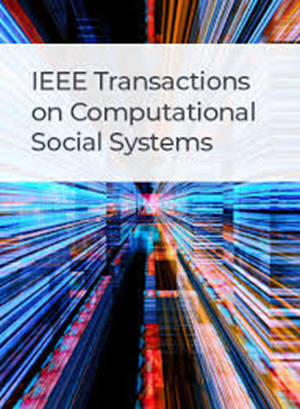用自我和他人想象图产生共情反应
IF 4.5
2区 计算机科学
Q1 COMPUTER SCIENCE, CYBERNETICS
IEEE Transactions on Computational Social Systems
Pub Date : 2024-09-11
DOI:10.1109/TCSS.2024.3424424
引用次数: 0
摘要
同理心是人类日常对话的基本品质,在对话系统中起着至关重要的作用。近年来,研究人员对共情反应生成的研究兴趣激增。然而,现有的方法往往忽略了产生移情想象的高级过程,这涉及到在谈话中有意识地设身处地地为他人着想。为了解决这一关键问题,我们提出了一种名为EmpSOI的新方法,该方法采用自我和他人想象来产生共情反应。具体来说,我们设计了两个异构图,以结合两种不同的想象视角:自我想象视角和他者想象视角,这使得模型能够从不同的角度与用户进行共情。此外,我们还引入了一种门控机制来调节这两个视角在反应产生阶段对想象信息的贡献。该机制使模型能够区分两种想象的观点。大量的自动和手动实验结果表明,与其他比较模型相比,我们的模型在感知用户的情绪状态和产生共情反应方面具有优势。本文章由计算机程序翻译,如有差异,请以英文原文为准。
Empathetic Response Generation With Self and Other-Imagine Graph
Empathy, an essential quality in daily human conversations, plays a crucial role in dialogue systems. In recent years, there has been a surge of interest among researchers in developing empathetic response generation. However, existing methods often ignore the high-level process of generating empathy-imagination, which involves consciously putting oneself in the other person's shoes during a conversation. To solve this critical problem, we propose a novel approach called EmpSOI that adopts self and other-imagine to generate empathetic responses. Specifically, we design two heterogeneous graphs to incorporate the two different imaginative perspectives: the self-imagine perspective and the other-imagine perspective, which enables the model to empathize with the user from different perspectives. Besides, we incorporate a gating mechanism to regulate the contribution of imagination information from these two perspectives during the response generation stage. The mechanism enables the model to differentiate between two imaginative perspectives. The results of extensive automatic and manual experiments illustrate the advantages of our model compared to other comparative models in perceiving the user's emotional state and generating empathetic responses.
求助全文
通过发布文献求助,成功后即可免费获取论文全文。
去求助
来源期刊

IEEE Transactions on Computational Social Systems
Social Sciences-Social Sciences (miscellaneous)
CiteScore
10.00
自引率
20.00%
发文量
316
期刊介绍:
IEEE Transactions on Computational Social Systems focuses on such topics as modeling, simulation, analysis and understanding of social systems from the quantitative and/or computational perspective. "Systems" include man-man, man-machine and machine-machine organizations and adversarial situations as well as social media structures and their dynamics. More specifically, the proposed transactions publishes articles on modeling the dynamics of social systems, methodologies for incorporating and representing socio-cultural and behavioral aspects in computational modeling, analysis of social system behavior and structure, and paradigms for social systems modeling and simulation. The journal also features articles on social network dynamics, social intelligence and cognition, social systems design and architectures, socio-cultural modeling and representation, and computational behavior modeling, and their applications.
 求助内容:
求助内容: 应助结果提醒方式:
应助结果提醒方式:


